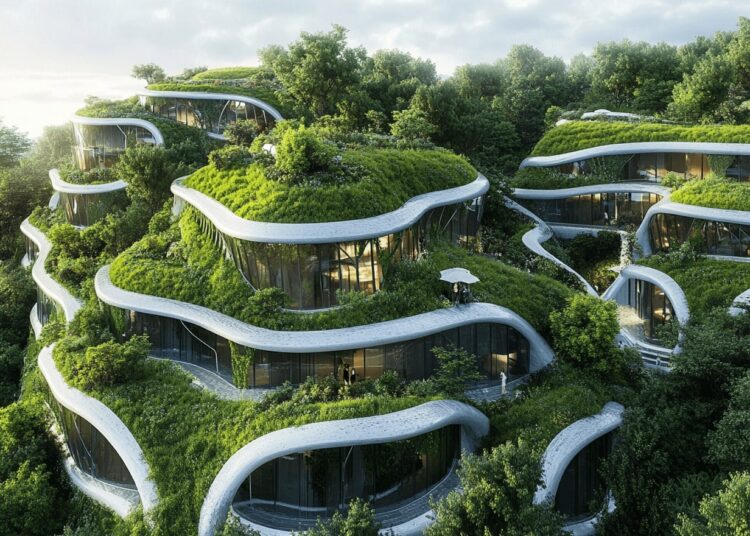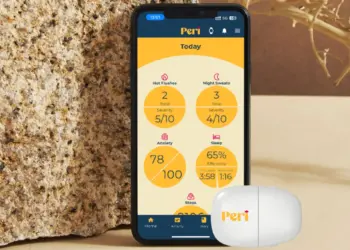
The residential architecture industry has accelerated its evolution in the modern era, driven by a newly radicalized culture, awareness, technological growth, and impending deadlines. As the calendar page flips to 2025 the future-focused homes of the coming decade promise to be equipped with artificial intelligence, energy conscious systems, and architectural practices centered on humanity’s foundational needs.
In 2025, the self-serving concepts of efficiency, integration, and energy conscious systems will be a home’s core principles. The architectural trends, practices, and guiding principles of the coming decade promise to reshape the residential industry, returning back the core values of eco-friendliness and fostering a smooth synergy with the ecosystem.
- Eco-friendly Design and Architecture:cores which homes will be built to “live” with.
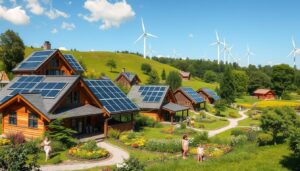
These are homes which blend nature with built architecture, as they are in sync with nature and ecology
As they are in sync with nature and ecology, homes in the future will be equipped to practice solar energy capture systems, water recycling, reusable construction materials, and a host of innovative ecologically conscious systems.
🔹 Core principles and factors of eco-friendly homes:
- Re-used Construction Materials: bamboo, earthen bricks, recycled glass, FSC-certified wood.
- Renewable systems: solar panels, micro wind turbines, solar water heaters.
- Water Control: rainwater harvesting, greywater recycling, smart irrigation.
- Passive systems: smart wind and water systems, controlled glass and window openings, positioned exhaust systems and ecologically aware roofing.
Did You Know? Sustainable architecture can slash construction energy by 40% and increase the energy efficiency of new homes by 20%.
- Smart Homes: High-Tech Living at Every Corner
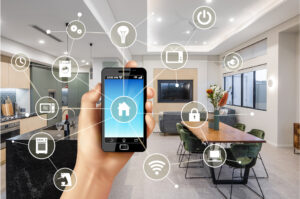
Due to the rapid development of technology, the idea of ‘home’ has advanced significantly. Predictive milestones, such as the integration of Artificial Intelligence (AI), the Internet of Things (IoT), and pas automation in 2025, indicate integration of such technologies in our living spaces.
🔹 Popular smart home features:
- Voice & App Controls: hands-free management of powered curtain, music, lights, and temperature.
- Integrated Security Systems: AI-infused biometric and facial recognition cameras, digital locks.
- Smart Appliances: AI powered fridges with restock capabilities and ovens controllable through smartphones.
- Real world example: By 2025, smart homes learn user preferences and moods to adjusting and automating tasks well in advance such as setting ambiance, adjusting temperature, and lighting.
- Modular & Multipurpose Design: Flexible Spaces for Modern Living
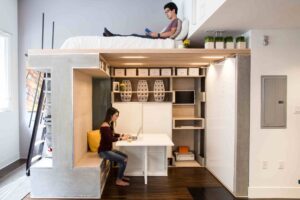
How spaces are used has changed in the post pandemic world, with homes as an office, classroom, workout zone, and classroom. By 2025, multifunctional spaces with additional modular features will be available to handle the modern dynamic needs of living.
🔹 Innovative modular design concepts:
- Hybrid Rooms: transforming home office to guest room to yoga studio.
- Smart furniture: staircases with hidden storage and couches or beds with foldable desks.
- Flexibility is critical: Homes in 2025 are tailored to the needs of rapid adaptation, particularly for digital nomads and remote employees.
- Aesthetics: Minimalistic, Modern, and Technology Driven
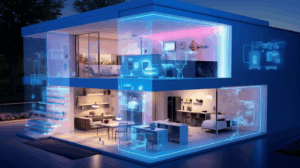
The clean, futuristic aesthetics of homes embrace smooth lines and elegance, portraying a welcoming environment. The philosophy of minimalist, functional design encourages the maxim that “less is more.”
🔹 Distinctive features of futuristic design:
- Color Palette: Neutral’s whites, greys, blacks, with natural elements as accents.
- Modern Materials: Reflective glass, light metals, engineered wood, and exposed concrete.
- Smart Lighting: Ambient, automated, adjustable lighting to designation of time, set mood, and activity.
- Open Concepts: High ceilings with voluminous windows and free-flowing spatial arrangements.
Cinematic design inspiration from Ex Machina or Her combines warm, natural elegance with sleek sophistication.
- Biophilic Architecture: Reconnecting Humans and Nature
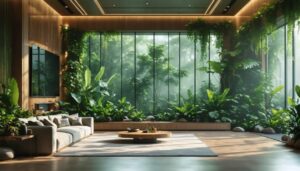
2025 architectural trends build homes around nature, integrating architectural elements in a more organic and holistic way. Biophilia, the human tendency to seek nature, is at the forefront of architectural approaches in 2025, creating calm and health promoting settings.
🔹 Biophilic elements in modern homes:
- Gardens Indoors: Vertically green, interior courtyards, and green walls.
- Water Features: Indoor waterfalls and reflecting pools.
- Natural Materials: Organic textures of raw wood and stone.
- Visual Connectivity: Framing views through large windows of trees, sky, and gardens.
Great estimates say biophilic homes cut stress levels, with biophilic design drastically improved focus and sleep quality.
Conclusion: Advanced Abodes, Contemporary Existence
In 2025, architecture forms a cohesive whole with personal experience. With a home, one now associates a lifestyle replete with eco-friendliness, technology, adaptability, and health—wellness—intertwined, creating an integrated environment of living.
In the for-sight horizon.
- Emotional and practical responsiveness will advance in homes.
- Architecture will integrate with smart cities into living intelligent ecosystems.
- How a home feels will be a primary focus for design, alongside aesthetics.
“Shifting the value proposition to smarter living, as opposed to mere spatial expansion, will radically transform the architecture in the years to come.”

